
Acetyl Hexapeptide-3 (Argireline) – 200MG
$202.00
Discount per Quantity
| Quantity | Discount | Price |
|---|---|---|
| 5 - 8 | 5% | $191.90 |
| 9 + | 10% | $181.80 |
Scientific Overview of Acetyl Hexapeptide-3 (Argireline)
Acetyl Hexapeptide-3, commonly referred to as Argireline, is a synthetic peptide fragment derived from the SNAP-25 protein, a component associated with the SNARE complex. This protein assembly plays a role in neurotransmitter release, particularly acetylcholine, which is linked to muscle contractions. Argireline is structurally similar to part of SNAP-25, which has drawn scientific interest due to its potential research applications.
Alternative Names: Argireline, Argireline Acetate, Acetyl Hexapeptide
Acetyl Hexapeptide-3 Studies and Research Data
Investigations into Skin Structure and Wrinkling
Research has suggested that Acetyl Hexapeptide-3 may play a role in supporting extracellular matrix proteins such as collagen. Some laboratory findings have indicated a potential for this peptide to influence wrinkle depth and appearance, possibly through interactions with the proteins that contribute to skin firmness. In vitro and topical model studies have noted varying observations, ranging from minimal to more pronounced outcomes when examining surface lines and creases.
Acetyl Hexapeptide-3 Research on Hydration and Barrier Function
Some studies have focused on the relationship between Acetyl Hexapeptide-3 and skin hydration. Experimental results indicated a reduction in transepidermal water loss (TEWL) following exposure, suggesting a possible role in maintaining skin barrier integrity and water retention in tissue models.
Acetyl Hexapeptide-3 Studies on Muscle Activity and Neurotransmission
Acetyl Hexapeptide-3 has also been studied in relation to muscle twitching. Data from certain research models propose that the peptide may interact with mechanisms involving neurotoxins, potentially prolonging their activity. In one experiment, exposure to both the peptide and a neurotoxin was associated with a delayed return of twitching activity compared to neurotoxin-only groups, though the differences were not statistically significant.
Structural Modifications and Research Expansion
Researchers have experimented with modifying Acetyl Hexapeptide-3 by attaching palmitic acid, resulting in a compound known as Palmitoyl Hexapeptide-3. In murine studies focused on pain research, this modified peptide was linked to potential changes in pain sensitivity, including reduced hyperalgesia and allodynia. Scientists have proposed that the modification may stabilize the peptide within neuronal membranes and influence TRPV1 channel behavior, both of which are relevant in nociceptive signaling.
Conclusion
Acetyl Hexapeptide-3 (Argireline) has been the subject of research across several domains, including skin structure, hydration, neuromuscular activity, and experimental peptide modifications. While findings vary, the peptide continues to be explored in diverse laboratory settings for its potential contributions to biochemical and physiological processes.
References
- Ponsati, B., Carreño, C., Curto-Reyes, V., Valenzuela, B., Duart, M. J., Van den Nest, W., Cauli, O., Beltran, B., Fernandez, J., Borsini, F., Caprioli, A., Di Serio, S., Veretchy, M., Baamonde, A., Menendez, L., Barros, F., de la Pena, P., Borges, R., Felipo, V., Planells-Cases, R., … Ferrer-Montiel, A. (2012). An inhibitor of neuronal exocytosis (DD04107) displays long-lasting in vivo activity against chronic inflammatory and neuropathic pain. The Journal of Pharmacology and Experimental Therapeutics, 341(3), 634–645. https://doi.org/10.1124/jpet.111.190678
- Blanes-Mira C, Clemente J, Jodas G, Gil A, Fernández-Ballester G, Ponsati B, Gutierrez L, Pérez-Payá E, Ferrer-Montiel A. A synthetic hexapeptide (Argireline) with antiwrinkle activity. Int J Cosmet Sci. 2002 Oct;24(5):303-10. doi: 10.1046/j.1467-2494.2002.00153.x. PMID: 18498523
- Lungu, C., Considine, E., Zahir, S., Ponsati, B., Arrastia, S., & Hallett, M. (2013). Pilot study of topical acetyl hexapeptide-8 in the treatment for blepharospasm in patients receiving botulinum toxin therapy. European Journal of Neurology, 20(3), 515–518. https://doi.org/10.1111/ene.12009
- Lim SH, Sun Y, Thiruvallur Madanagopal T, Rosa V, Kang L. Enhanced Skin Permeation of Anti-wrinkle Peptides via Molecular Modification. Sci Rep. 2018 Jan 25;8(1):1596. doi: 10.1038/s41598-017-18454-z. PMID: 29371611; PMCID: PMC5785486
- Wang Y, Wang M, Xiao XS, Huo J, Zhang WD. The anti-wrinkle efficacy of Argireline. J Cosmet Laser Ther. 2013 Aug;15(4):237-41. doi: 10.3109/14764172.2013.769273. PMID: 23464592
- Raikou, V., Varvaresou, A., Panderi, I., & Papageorgiou, E. (2017). The efficacy study of the combination of tripeptide-10-citrulline and acetyl hexapeptide-3. Journal of Cosmetic Dermatology, 16(2), 271–278. https://doi.org/10.1111/jocd.12314
- Wang Y, Wang M, Xiao S, Pan P, Li P, Huo J. The anti-wrinkle efficacy of argireline, a synthetic hexapeptide, in Chinese subjects: a randomized, placebo-controlled study. Am J Clin Dermatol. 2013 Apr;14(2):147-53. doi: 10.1007/s40257-013-0009-9. PMID: 23417317
- An JH, Lee HJ, Yoon MS, Kim DH. Anti-Wrinkle Efficacy of Cross-Linked Hyaluronic Acid-Based Microneedle Patch with Acetyl Hexapeptide-8 and Epidermal Growth Factor on Korean Skin. Ann Dermatol. 2019 Jun;31(3):263-271. doi: 10.5021/ad.2019.31.3.263. PMID: 33911590; PMCID: PMC7992733
Disclaimer:
The products mentioned are intended solely for laboratory research and in-vitro experimentation. They are not approved for human or animal use of any kind. All details provided are for educational purposes only. By purchasing from this site, you agree to comply with our Terms and Conditions.
52 reviews for Acetyl Hexapeptide-3 (Argireline) – 200MG
Only logged in customers may leave a review.
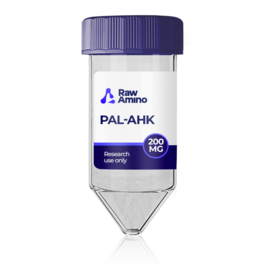
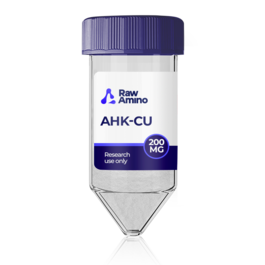
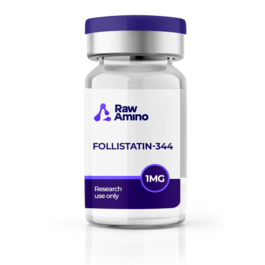
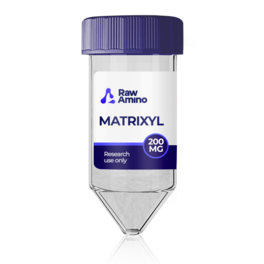
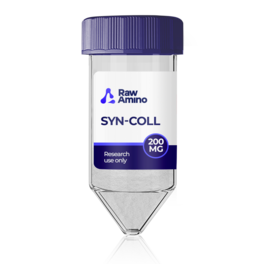
Samantha T –
Brittany Smith –
Quant K –
Elizabeth P –
proto z –
Kristen V –
vial S –
Vector Falcon –
lui S –
data x –
luiiiiiis J –
Estoy muy impresionado con sus productos y servicios
rodri guezlori –
Kristen H –
This supplier is my go-to, never disappoints!!!!
erika B –
Brittany X –
My team and I ordered from a few different suppliers and I like Raw for their quick delivry with care, and the customer service is excellent. Never an issue they didn’t fix quickly and with generosity.
natasha J –
davis jeffrey –
cindy T –
cindy M –
Would love to see more promotionals with peptides bought togther most frequently!
Quant D –
Quartz Fox –
peptide z –
Crimson Orchid –
fmurillo P –
Came quicker than I thought
Jerry D –
Echo S –
Abigail D –
Brian Y –
Vector Drift –
Amy S –
Silver Sparrow –
Daniel C –
Quartz Sparrow –
kevin T –
Nova Atlas –
Suzanne P –
Suzanne N –
Exceptional…
DataCore D –
DataCore A –
Jessica H –
quant k –
proto k –
slewis A –
slewis P –
professioal company
Swift Orchid –
Nova Falcon –
Kyle X –
Kyle Q –
It was good.
joseph harris –
Where are you seeing the COA info? Otherwise good
jared kp –
Lorraine S –
Lorraine M –
Good experience with this product.